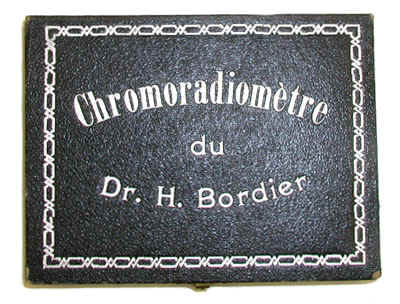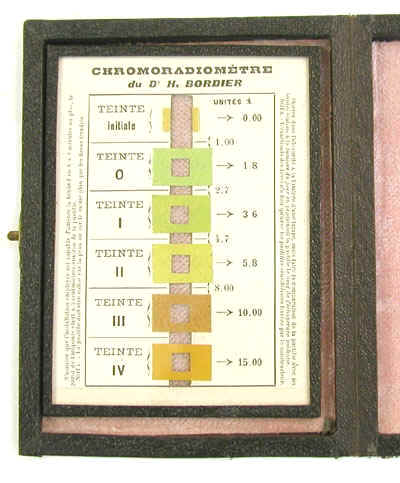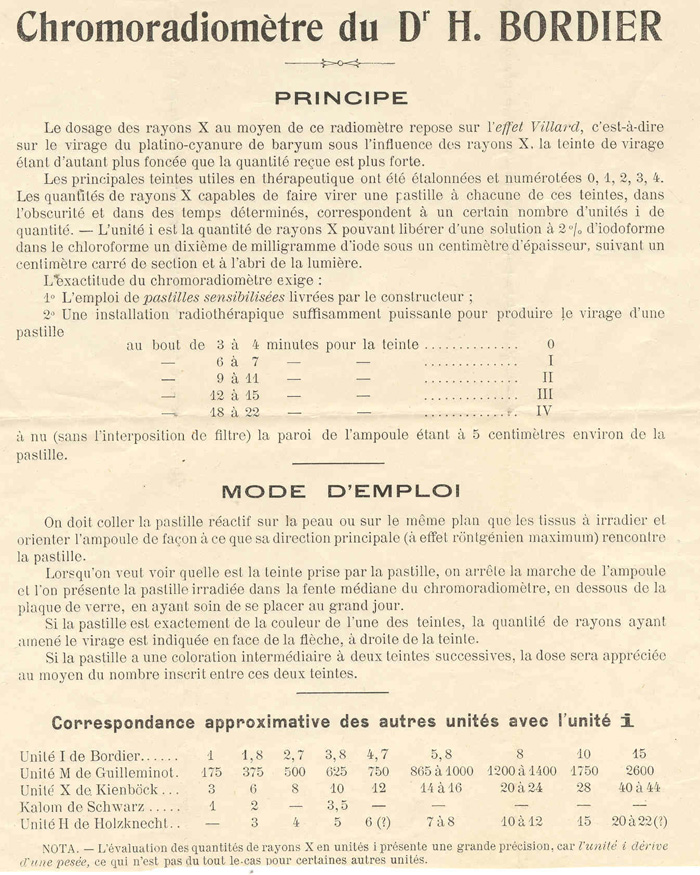Dr. Bordier's Chromoradiomètre (ca. 1911-1920)
The Chromoradiomètre, developed by Léonard Bordier of Lyons France in 1906, was used by physicians to determine the optimal exposure conditions for an X-ray. It is an example of an extremely early color dosimeter. Like a similar device invented by Raymond Sabouraud and Henri Noiré, it was especially popular with dermatologists.
In the following quote from 1915 (Lovibond), D. Corbett is discussing the use of color change for the measurement of x-ray dosage: "Hitherto the only methods at all generally used have been Hampson's radiometer and Bordier's radio-chronometer, the former in this country, and the latter on the Continent."

The Chromoradiomètre employed small disks (called pastilles) of barium platinocyanide which would change color from green to a dark yellow-orange as a result of the exposure to X-rays. Alas, the example in the collection is missing the pastilles. Bordier’s pastilles, placed directly on the patient’s body, used the following standard scale of four colors: teinte I, a pale yellowish green, produced epilation after 20 days; teinte II, a sulphur-yellow shade, produced erythema (i.e., a reddening of the skin); teinte III, the color of gamboge, produced dermatitis, and; teinte IV, ulceration and necrosis (tissue death).

An exposure equivalent to Tint IV indicated a problem, a dose this high should never have been applied to the skin.
This particular version of the chromoradiometer was introduced in 1911. It differs from the earlier version in two key ways. First. the standard tints are arranged across a vertical slit in the card. Second, there is a new tint, the "initial tint" positioned at the top of the slit.
One disadvantage of the device was that certain light sources could not be used when comparing the color of the exposed pastille to the standard tint on the card.

The above photograph shows the instructions, in French naturellement, that came with the device.
Size: 4.25" x 5.5" x 0.75"
References
- Bordier, L. Radiometric Methods, Archives of the Roentgen Ray, 11, page 6. 1906.
- Bordier, L. New Model of Bordier's Chromoradiometer.Archives of the Roentgen Ray.1911.
- Mould, R. A Century of X-rays and Radioactivity in Medicine. Institute of Physics Publishing. Bristol. 1993.
